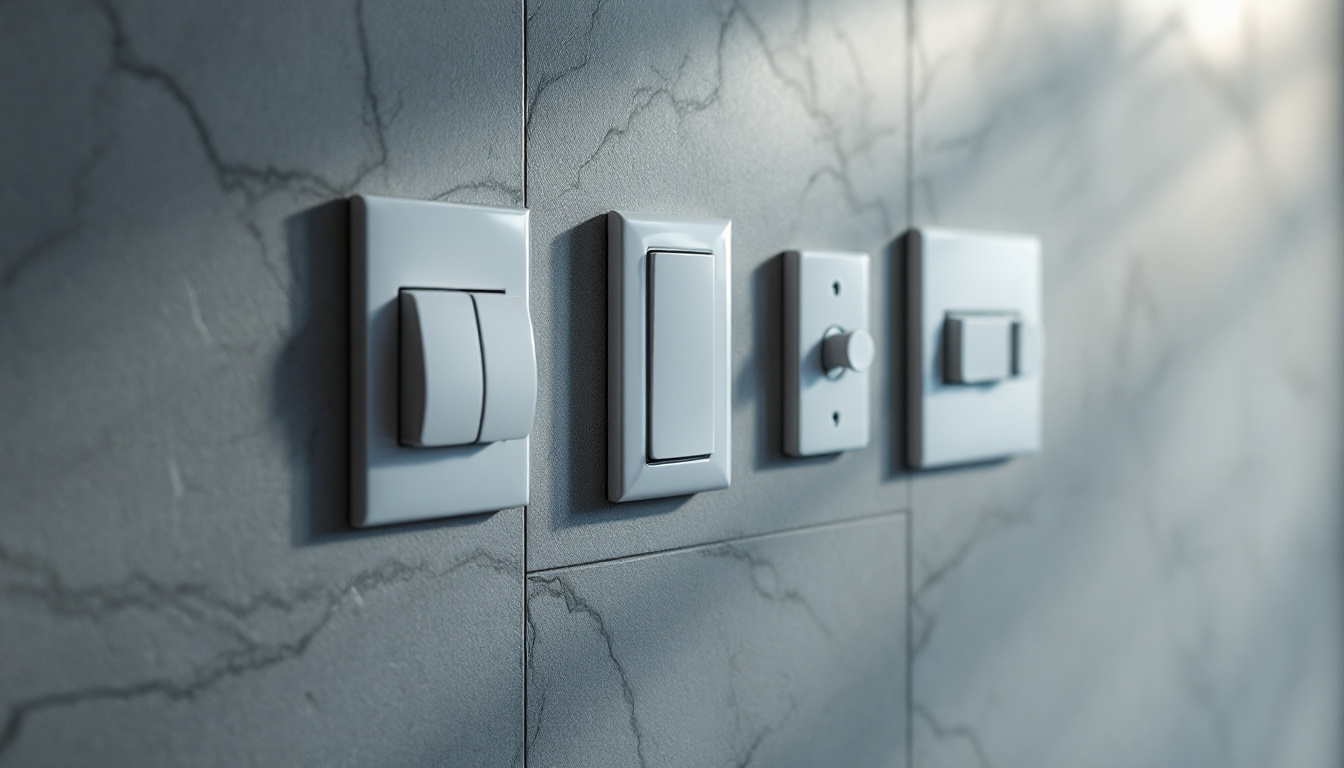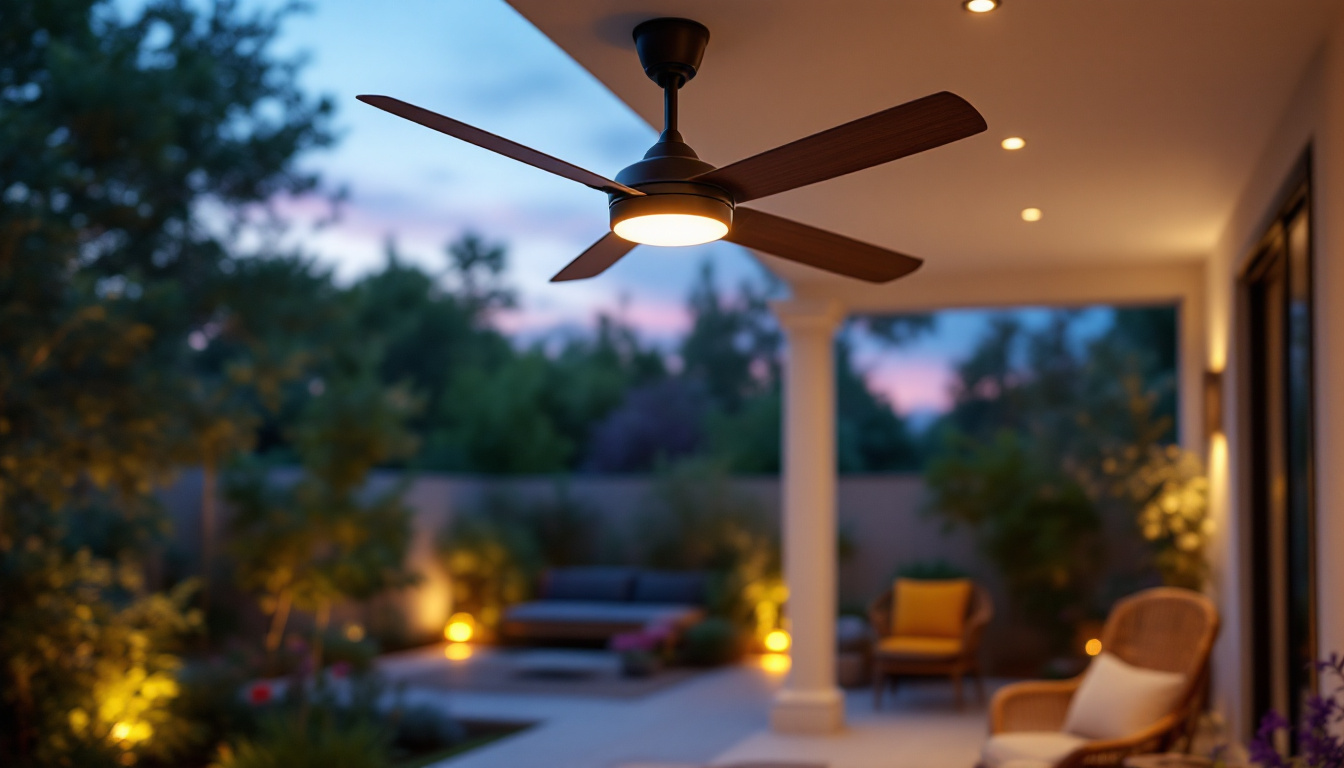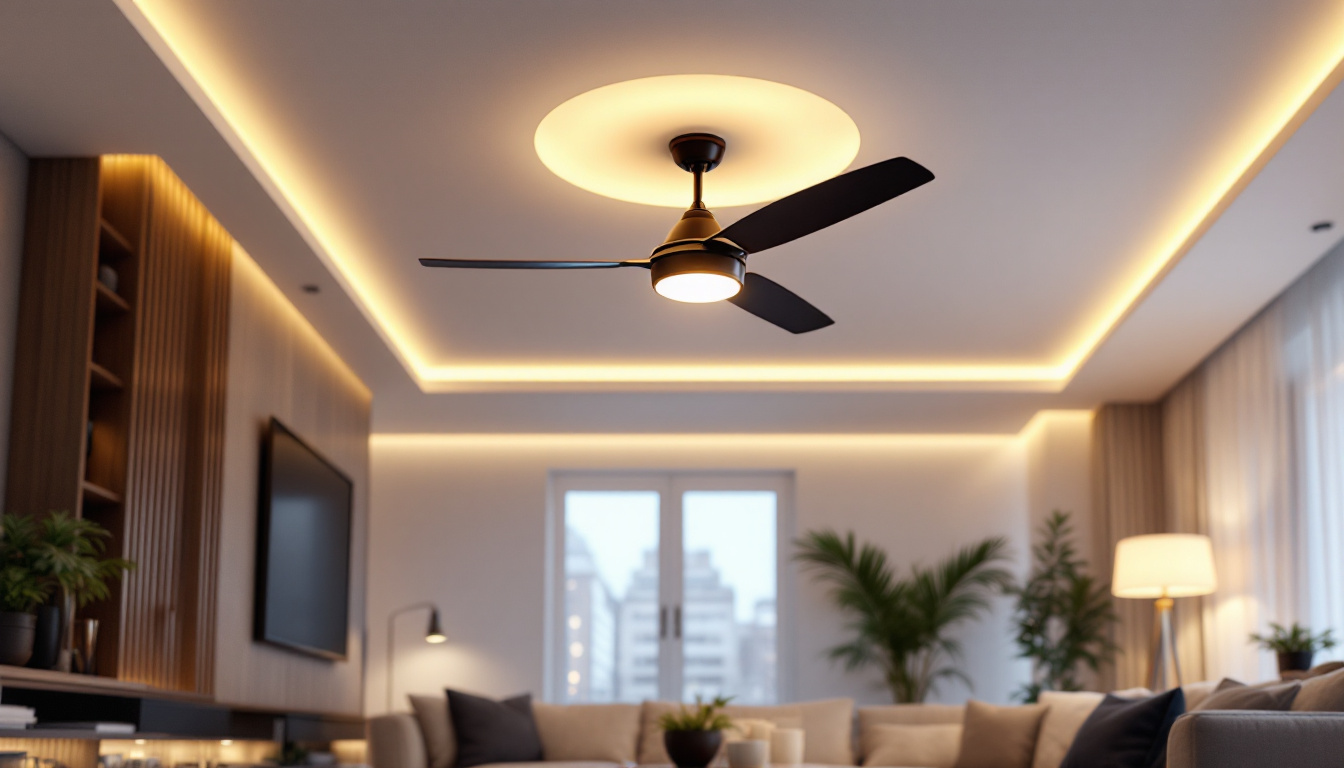
Lighting contractors play a crucial role in ensuring that residential and commercial spaces are not only well-lit but also compliant with various regulations. Understanding the different types of light switches available and their compliance requirements is essential for any lighting professional. This article explores the various types of light switches, their functionalities, and what lighting contractors need to know to stay compliant.
Light switches come in various designs and functionalities, each suited to different applications and environments. Familiarity with these types can help contractors make informed decisions when selecting switches for their projects.
Standard toggle switches are perhaps the most common type of light switch found in residential and commercial buildings. They operate by flipping a lever up or down to either turn the light on or off. These switches are straightforward and reliable, making them a popular choice for many applications.
When installing toggle switches, it’s important to consider the electrical load they will handle. Contractors should ensure that the switch is rated for the wattage of the fixtures it controls. Additionally, adhering to local electrical codes is paramount to ensure safety and compliance. It’s also worth noting that toggle switches can be found in various colors and finishes, allowing for customization that can match the aesthetics of a room. This versatility makes them not only functional but also a design element in interior spaces.
Dimmer switches allow users to adjust the brightness of lighting fixtures, providing flexibility and energy savings. They come in various forms, including rotary, slide, and digital dimmers. Each type offers different functionalities, such as preset lighting levels or remote control options.
When selecting dimmer switches, contractors must ensure compatibility with the type of bulbs being used. For instance, LED bulbs may require specific dimmers designed to handle their lower wattage. Furthermore, compliance with energy efficiency standards is essential, as many jurisdictions have regulations regarding the use of dimmers in energy-saving applications. Beyond functionality, dimmers can create ambiance in a space, transforming a bright room into a cozy setting for gatherings or quiet evenings. The ability to adjust lighting not only enhances the mood but can also prolong the lifespan of light bulbs by reducing their operational intensity.
As technology advances, smart switches have gained popularity. These devices can be controlled remotely via smartphones or voice-activated systems, offering convenience and enhanced control over lighting. Smart switches often integrate with home automation systems, allowing for scheduling and scene setting.
Contractors should be aware of the specific requirements for installing smart switches, including Wi-Fi connectivity and compatibility with existing electrical systems. Additionally, ensuring that these devices meet local building codes and safety standards is crucial to avoid potential issues down the line. The integration of smart switches into a home can also lead to significant energy savings, as users can monitor and control their energy consumption more effectively. Furthermore, many smart switches come equipped with features like energy usage tracking and alerts, providing homeowners with valuable insights into their lighting habits and encouraging more sustainable practices. As the demand for smart home technology continues to rise, understanding the nuances of these devices becomes increasingly important for contractors looking to stay ahead in the industry.
Compliance with electrical codes and regulations is a fundamental aspect of any lighting project. Understanding the requirements for different types of light switches can help contractors avoid costly mistakes and ensure the safety of their installations.
The National Electrical Code (NEC) sets the standard for safe electrical design, installation, and inspection in the United States. It outlines various requirements for light switches, including installation heights, grounding, and circuit protection. Contractors must familiarize themselves with the NEC to ensure that their work adheres to these standards.
For example, the NEC specifies that switches must be installed at a height that is accessible to all users, including those with disabilities. This means that contractors need to consider the placement of switches in relation to the overall design of the space. In addition to accessibility, the NEC also emphasizes the importance of ensuring that switches are installed in dry locations, away from moisture, to prevent electrical hazards. Understanding these nuances can significantly enhance the safety and usability of lighting systems.
In addition to the NEC, local building codes may impose additional requirements for light switch installations. These codes can vary significantly from one municipality to another, so it is essential for contractors to research and understand the specific regulations in their area.
Local codes may dictate the types of switches that can be used, the number of switches on a circuit, and even the materials that can be used for installation. Failing to comply with these regulations can result in fines, project delays, or even the need to redo work that does not meet standards. Moreover, local authorities may conduct inspections to ensure compliance, which can further complicate the timeline of a project if any issues are found. Therefore, proactive communication with local building departments can help streamline the approval process and minimize potential setbacks.
Energy efficiency is a growing concern in the lighting industry, and many jurisdictions have adopted regulations to promote the use of energy-efficient lighting solutions. This includes requirements for the types of switches used in conjunction with energy-efficient bulbs, such as LEDs.
Contractors should stay informed about energy efficiency standards, as they can impact the types of switches that can be installed. For example, some areas may require dimmer switches to be compatible with LED lighting to qualify for energy rebates or incentives. Understanding these standards can help contractors provide better service to their clients while ensuring compliance. Additionally, the integration of smart technology into lighting systems is becoming increasingly common, and contractors must be aware of how these advancements can affect energy consumption and compliance. Smart switches, which can be programmed for optimal energy use, are not only compliant with many energy efficiency standards but also offer enhanced convenience and control for users, making them a valuable addition to modern lighting projects.
Proper installation of light switches is critical for both functionality and safety. Following best practices can help contractors avoid common pitfalls and ensure that their work meets all necessary standards.
When installing light switches, proper wiring is essential. Contractors should ensure that all connections are secure and that the appropriate wire gauge is used for the circuit. Additionally, it is important to follow the manufacturer’s instructions for wiring specific types of switches, particularly smart switches and dimmers, which may have unique requirements.
Using wire nuts or other approved connectors can help ensure secure connections. Furthermore, labeling wires during installation can simplify future maintenance and troubleshooting, making it easier for contractors or electricians to identify issues down the line.
After installation, testing the light switches is crucial to verify that they are functioning correctly. This includes checking that the switches operate smoothly and that there are no flickering lights or other issues. Additionally, contractors should ensure that all switches are properly grounded to prevent electrical hazards.
Using a multimeter can help contractors verify voltage levels and ensure that circuits are functioning as intended. Conducting these tests not only ensures compliance but also enhances the safety and reliability of the installation.
Maintaining accurate documentation is vital for compliance and future reference. Contractors should keep records of all installations, including the types of switches used, their locations, and any relevant compliance documentation. This can be beneficial for inspections, warranty claims, or future renovations.
In addition to installation records, contractors should also document any communication with clients regarding compliance and safety standards. This transparency can help build trust with clients and demonstrate a commitment to quality workmanship.
The lighting industry is continuously evolving, with new technologies emerging that can impact the types of light switches used in installations. Staying informed about these trends can help contractors remain competitive and offer the best solutions to their clients.
As smart home technology becomes more prevalent, the integration of light switches with various home automation systems is expected to increase. This includes compatibility with voice assistants, mobile apps, and other smart devices that allow users to control their lighting remotely.
Contractors should be proactive in learning about the latest smart home technologies and how they can be integrated into lighting systems. This knowledge can help them provide valuable recommendations to clients looking to enhance their home automation experiences.
Future light switches may feature enhanced user interfaces that provide more intuitive control options. This could include touch-sensitive controls, customizable settings, and even adaptive lighting that adjusts based on the time of day or occupancy.
Contractors should keep an eye on emerging technologies that could change the way users interact with their lighting systems. Understanding these advancements can help contractors recommend the best solutions for their clients, ensuring that installations remain relevant and user-friendly.
With a growing emphasis on energy conservation, light switches with built-in energy monitoring features are likely to gain traction. These switches can provide users with real-time data on energy consumption, helping them make informed decisions about their lighting usage.
Contractors should consider the benefits of recommending energy-monitoring switches to clients who are interested in reducing their energy bills and environmental impact. By staying informed about these features, contractors can enhance their service offerings and contribute to more sustainable lighting solutions.
Understanding the various types of light switches and their compliance requirements is essential for lighting contractors. By staying informed about industry standards, installation best practices, and emerging technologies, contractors can ensure that their work is safe, efficient, and compliant with regulations.
As the lighting industry continues to evolve, embracing new technologies and trends will be crucial for contractors looking to remain competitive. By prioritizing compliance and quality installations, lighting contractors can build a reputation for excellence and contribute to the success of their projects.
Ready to elevate your lighting projects with the highest quality switches and fixtures? Look no further than LumenWholesale, where we provide contractors with spec-grade lighting products at unbeatable wholesale prices. Say goodbye to local distributor markups and hello to a vast selection of reliable, high-performance lighting that meets rigorous industry standards. With LumenWholesale, bulk buying is a breeze, thanks to our free shipping policy, ensuring you get the best value without any hidden fees. Don’t compromise on quality or cost. Wholesale Lighting at the Best Value is just a click away. Make the smart choice for your lighting needs with LumenWholesale.

Discover the ins and outs of light switch replacement costs with insights from professional lighting contractors.

Discover why purchasing recessed lighting LED retrofit kits in bulk from local distributors might not be the best choice.

Explore how outdoor ceiling fans with integrated lighting are transforming the business landscape for lighting contractors.

Discover innovative solutions for lighting contractors facing challenges with unique ceiling fans featuring integrated lights.